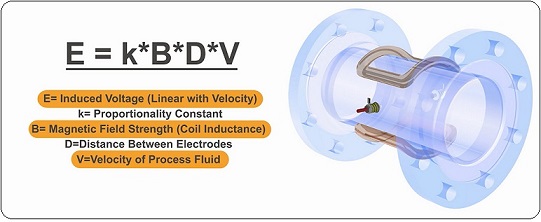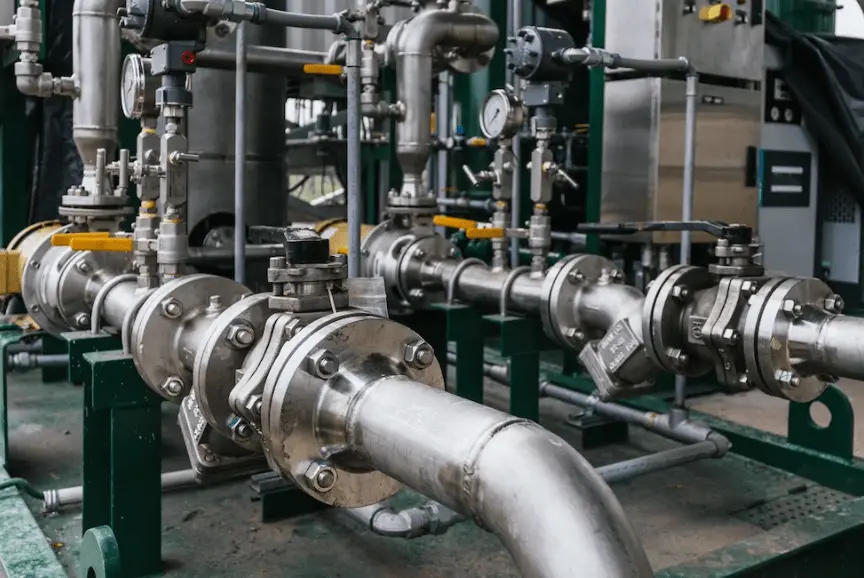Table of Contents
ToggleHow Electromagnetic Flow Meter Works?
In the world of flow measurement, electromagnetic flow meters stand out as highly accurate and versatile devices.
These instruments works on the principles of electromagnetism to precisely measure the flow rate of conductive fluids.
In this blog, we will learn the working principle of electromagnetic flow meters.
The Basics of Electromagnetic Flow Meters:
Electromagnetic flow meters, also known as magmeters, rely on Faraday’s law of electromagnetic induction to determine the flow rate of conductive liquids.
The meter consists of a flow tube, electrodes, a magnetic field generator, and a transmitter unit.
The working principle involves the generation of a magnetic field across the flow tube, which induces a voltage proportional to the fluid’s velocity.
This voltage is measured by the electrodes, and with the help of appropriate formulas, the flow rate can be accurately determined
Understanding Faraday’s Law:
Faraday’s law states that when a conductor (the conductive fluid) moves through a magnetic field, a voltage is induced across the conductor.
In the case of an electromagnetic flow meter, the voltage generated is directly proportional to the fluid’s velocity.
The key formula used to calculate the flow rate is Q = A × V, where Q represents the volumetric flow rate, A is the cross-sectional area of the flow tube, and V denotes the average fluid velocity.

Key Components and Operation:
The flow tube of an electromagnetic flow meter is typically made of non-magnetic material to prevent interference with the magnetic field.
Inside the flow tube, electrodes are strategically positioned to measure the induced voltage.
The magnetic field generator, usually consisting of coils, creates a uniform magnetic field across the flow tube.
As the conductive fluid flows through the tube, it cuts through the magnetic field, inducing the voltage measured by the electrodes
Summary:
Electromagnetic flow meters provide an effective solution for measuring the flow rate of conductive fluids.
By harnessing the principles of electromagnetism, these meters deliver accurate and reliable results across a wide range of applications.
Understanding the basic principles, key formulas, and components of electromagnetic flow meters enables engineers, technicians, and researchers to make informed decisions when selecting, installing, and utilizing these instruments.
Whether you’re working in water management, chemical processing, or any other industry requiring precise flow measurements, electromagnetic flow meters are a valuable tool for optimizing processes and ensuring efficient flow control.
There are several manufacturers like
ABB,
who manufacturer electromagnetic flow meters.
Thanks for reading!! Happy Learning!!
I hope you like above blog. There is no cost associated in sharing the article in your social media. Thanks for reading!! Happy Learning!!

